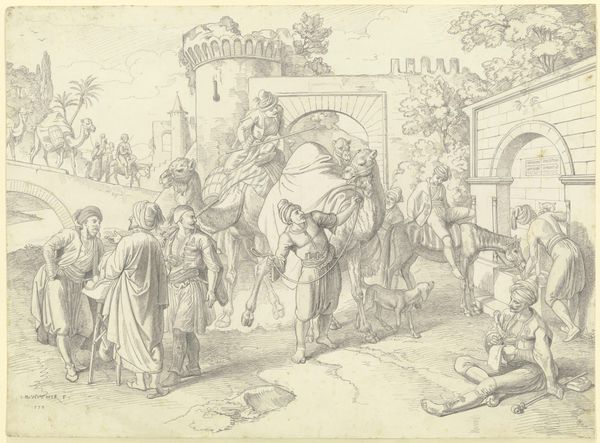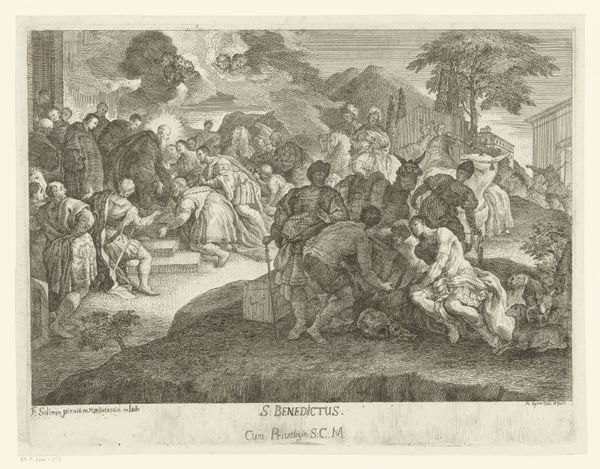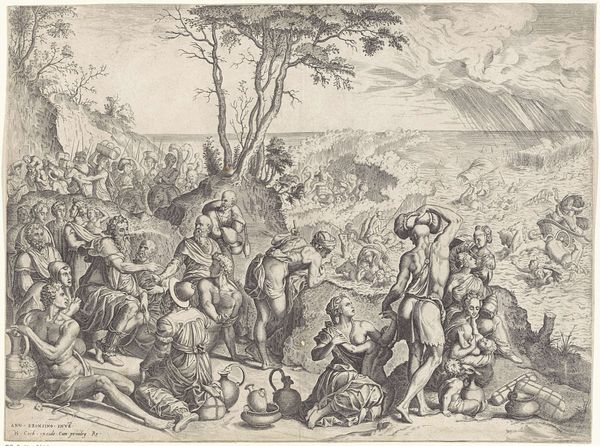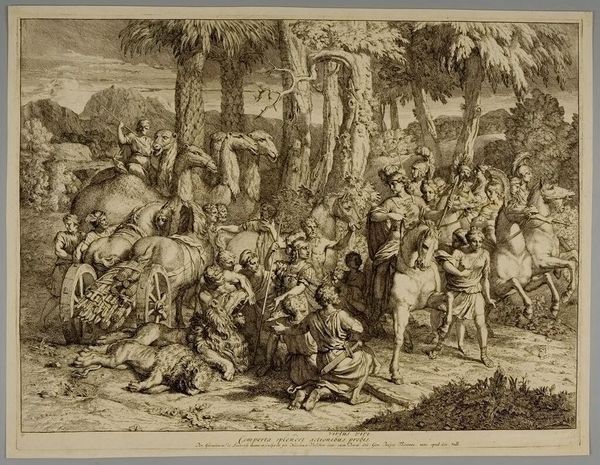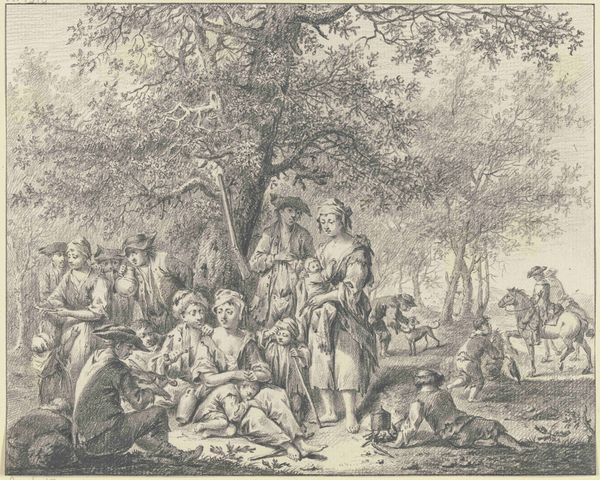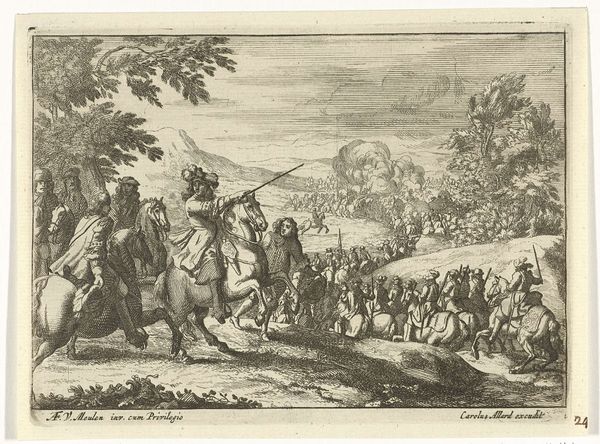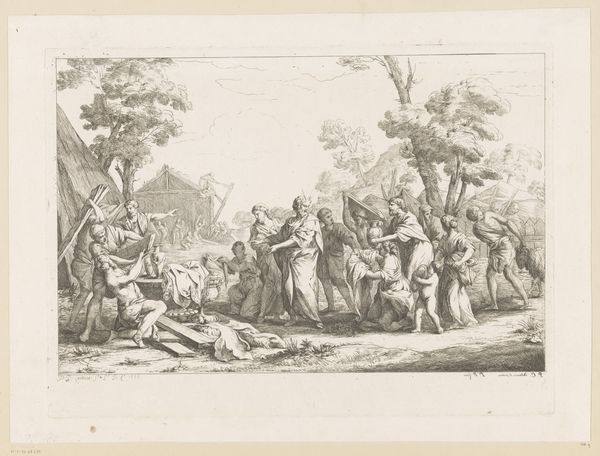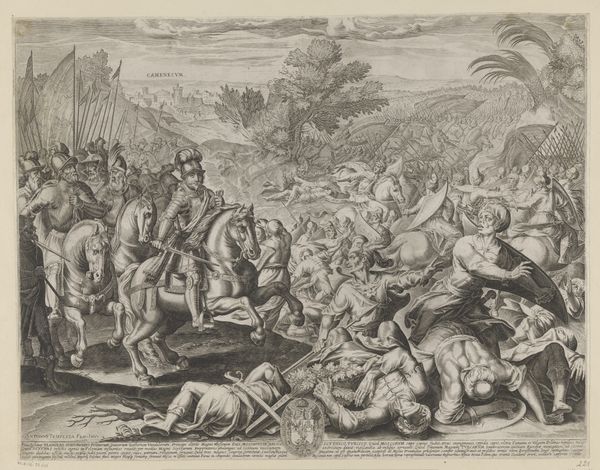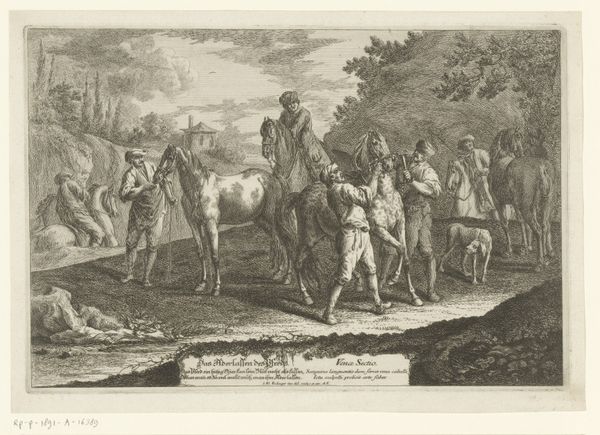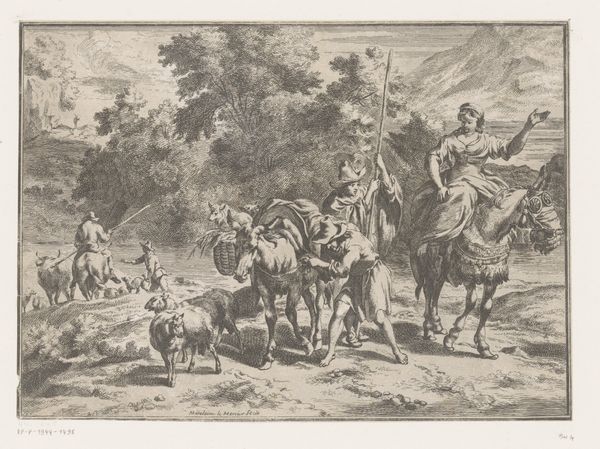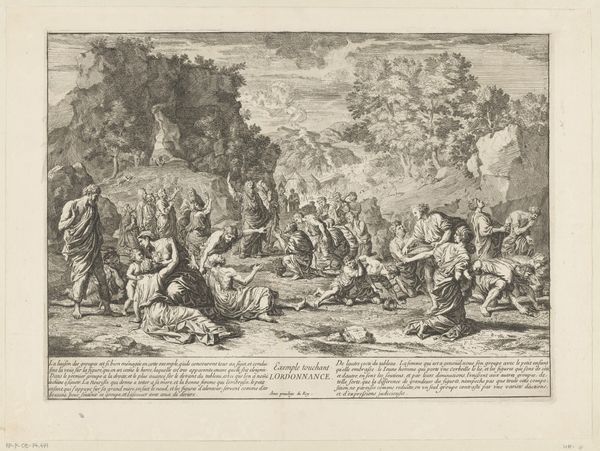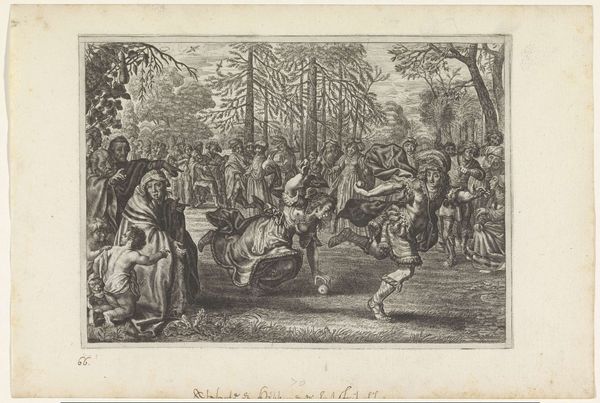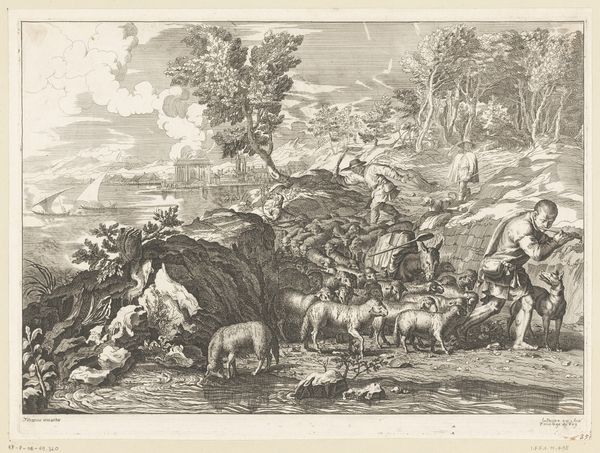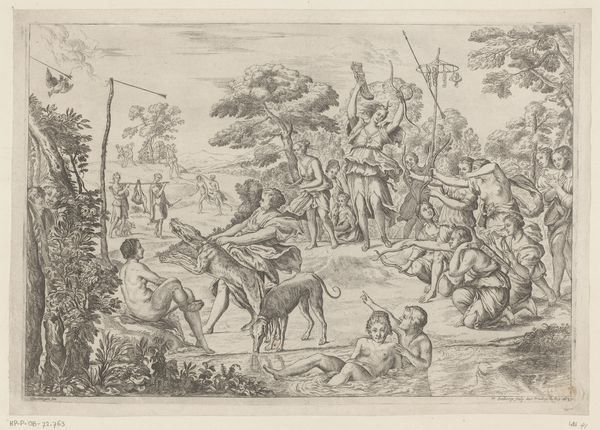
print, engraving
#
ink drawing
#
narrative-art
#
baroque
# print
#
landscape
#
figuration
#
history-painting
#
engraving
Copyright: National Gallery of Art: CC0 1.0
Gerard de Lairesse made this print, "Semiramis on the Lion Hunt," using a technique called etching. This process involves covering a metal plate with a waxy ground, then scratching into it with a needle to expose the metal. The plate is then submerged in acid, which bites into the exposed lines, creating grooves. Etching allowed Lairesse to achieve incredibly fine detail. Look at the textures of the foliage, the musculature of the horses, the expressions on the figures’ faces. The controlled process of etching, with its reliance on careful mark-making, is a very different sensibility from the spontaneous gesture we often associate with painting. The resulting print, multiplied and distributed, was a means of disseminating imagery widely, bringing the spectacle of courtly life to a broader audience. Etching, therefore, played a vital role in shaping public perception and cultural values. It’s a reminder that even seemingly straightforward images are the product of skilled labor, precise processes, and social context.
Comments
No comments
Be the first to comment and join the conversation on the ultimate creative platform.
